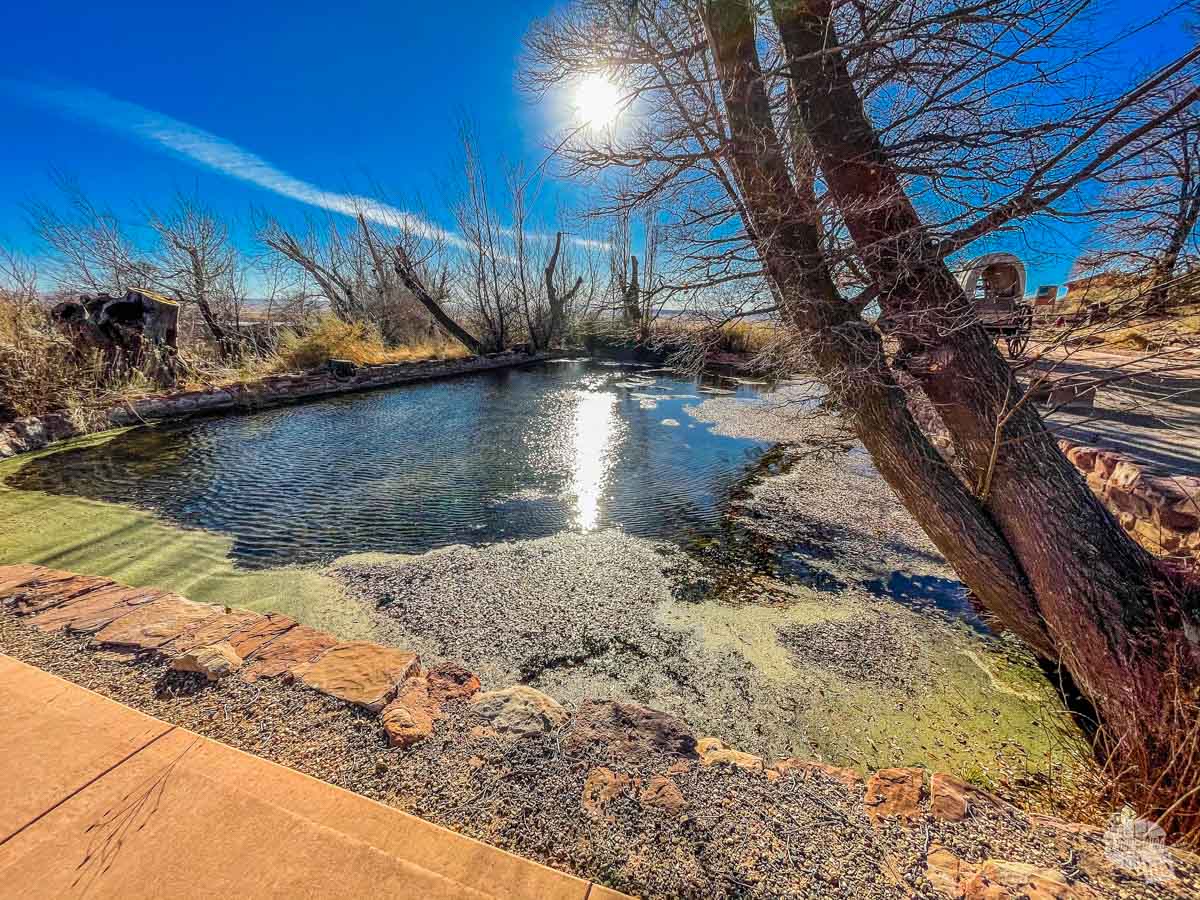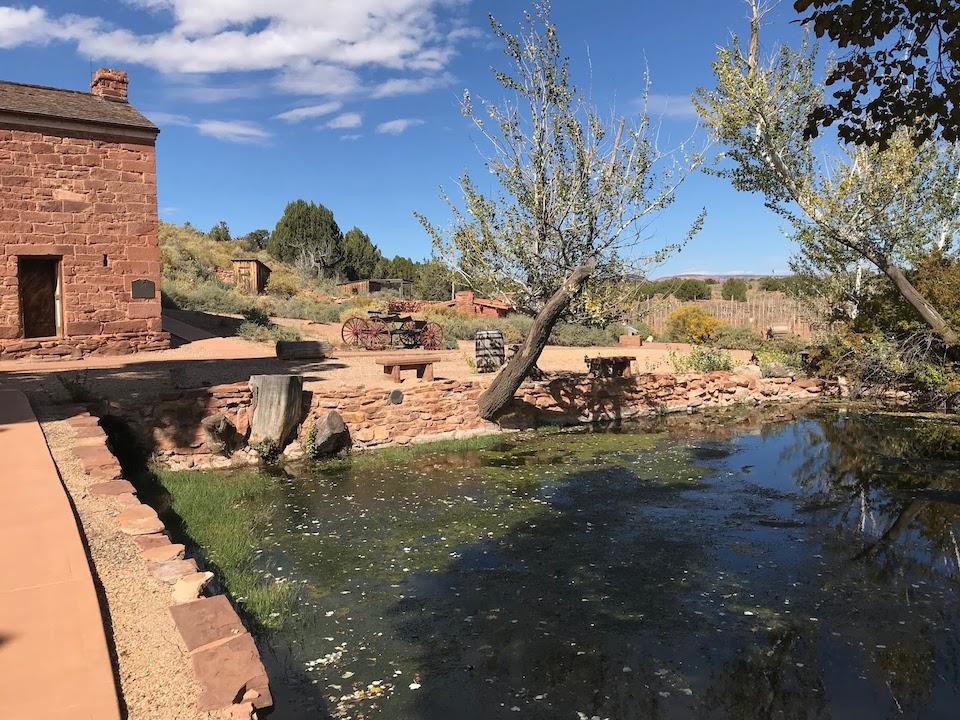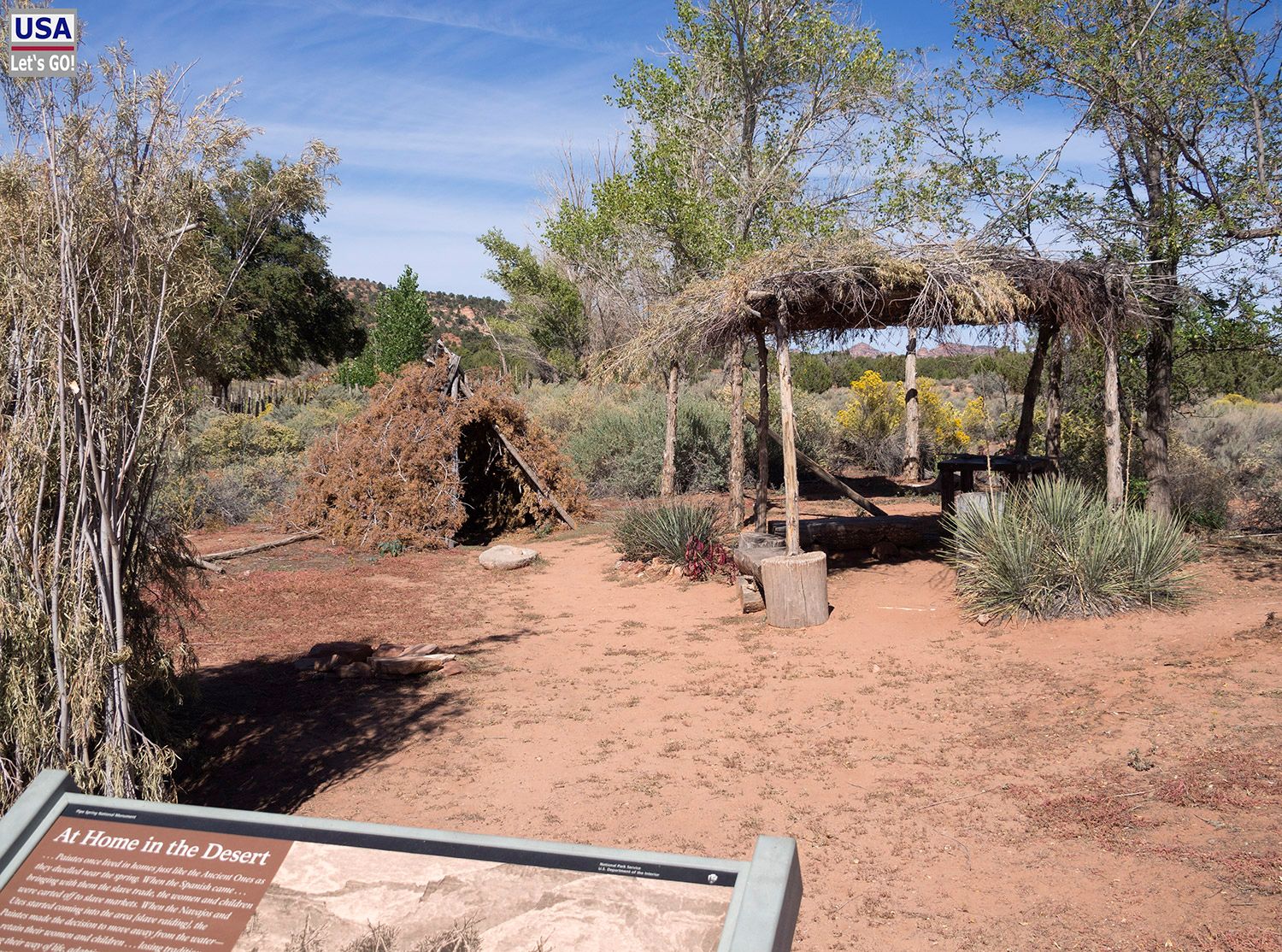
Pipe Spring: Where Desert Dreams and Destinies Converge on the Arizona Strip
The Arizona Strip is a land of profound silence, where the vast, ochre-dusted landscape stretches under an immense sky, seemingly untouched by the hurried pulse of modern life. It’s a place where time slows, and the wind whispers tales of ancient earth and enduring struggle. Nestled within this breathtaking, formidable expanse, just south of the Utah border, lies Pipe Spring National Monument – an unlikely oasis, a vibrant testament to the power of water, and a layered chronicle of human endeavor, conflict, and cultural resilience.
More than just a historic site, Pipe Spring is a geographic punctuation mark, a vital comma in the harsh narrative of the desert. For millennia, it has been the heartbeat of this remote region, a life-giving spring that has drawn every living thing to its steady flow. Today, the monument stands as a unique blend of natural wonder, Indigenous heritage, and pioneer history, overseen by the National Park Service, but forever rooted in the stories of those who depended on its precious waters.
The Original Keepers: A Kaibab Paiute Legacy

Before any pioneer set foot on the Arizona Strip, the area around Pipe Spring had been home to the Kaibab Paiute people for thousands of years. Their connection to this land runs deeper than any recorded history, etched into the very fabric of their culture and spirituality. For them, the spring, which they knew as "Pah-ru-koo-tuh-weap" (Water Flowing Over Rock), was not merely a source of hydration; it was a sacred place, a spiritual nexus, and the very foundation of their existence.
The Kaibab Paiute were skilled hunter-gatherers, intimately attuned to the rhythms of the desert. They moved with the seasons, utilizing the diverse resources of the land. The spring provided consistent water for drinking, cooking, and preparing medicinal plants. Its reliable flow also sustained riparian vegetation, attracting game animals, making it a crucial hunting ground. Their understanding of the ecosystem was profound, built on generations of observation and respect.
"The water is our mother," an elder might have explained, the sentiment echoing through generations. "It gives us life, it feeds the plants, it draws the animals. We are part of this cycle, and we must honor it." Their stories, petroglyphs, and archaeological remnants speak of a people who lived in harmony with their environment, developing sophisticated knowledge of edible plants, animal behavior, and sustainable resource management. Their presence at Pipe Spring was not one of conquest, but of integration and careful stewardship. The spring was a gift, and they were its original, respectful keepers.
However, the arrival of European settlers in the mid-19th century would irrevocably alter this ancient way of life. The very resource that sustained the Paiute would become a point of contention and the catalyst for profound change.
The Mormon Exodus and the Quest for a New Zion
The mid-1800s saw the westward expansion of Mormon pioneers, seeking to establish their "Zion" in the Intermountain West, free from persecution. Led by Brigham Young, these determined settlers pushed into increasingly remote and challenging territories. The Arizona Strip, with its isolated valleys and rugged plateaus, became a strategic frontier for their burgeoning commonwealth.
Brigham Young’s vision extended beyond simply settling land; it involved creating a self-sufficient, economically viable network of communities. Cattle ranching was crucial for providing food, hides, and tallow. The challenge, however, was finding sufficient water in the arid landscape to support large herds. This is where Pipe Spring, located on a vital corridor between southern Utah and the Grand Canyon, became a pivotal discovery.
In 1858, a surveying party discovered the abundant spring. Legend has it that William "Gunlock Bill" Hamblin, a local rancher, shot the bottom out of a pipe with his rifle as a demonstration of his marksmanship, giving the spring its enduring name. More practically, the spring’s consistent flow was a godsend. Brigham Young recognized its strategic importance immediately. He directed the establishment of a ranch and fort at the site, not just for cattle but also as a waystation and refuge for travelers and settlers moving south.

In 1863, Anson P. Winsor was dispatched to oversee the operation. What emerged was Winsor Castle, a sturdy two-story sandstone edifice that stands today as the focal point of the monument. This fort, completed in 1871, was no ordinary ranch house. It was a fortified dairy, a home, and a symbol of Mormon determination in a hostile environment.
Winsor Castle: An Oasis of Industry and Ingenuity
Winsor Castle is a remarkable example of pioneer ingenuity and adaptation. Built of locally quarried sandstone, its thick walls, narrow windows, and strategic placement made it defensible, a necessary precaution in an era of sometimes strained relations with Native American tribes and occasional outlaws. But its primary purpose was economic: to support the "United Order" dairy operations, supplying butter, cheese, and other provisions to the Mormon settlements further north.
The fort was designed with a spring house directly beneath its west wing, allowing the cool, constant flow of water to be channeled through a series of troughs. This natural refrigeration system kept dairy products fresh in the scorching desert heat – a crucial innovation. Cows grazed in the surrounding meadows, watered by the spring’s overflow, and their milk was processed daily by the families living within the fort.
Life inside Winsor Castle was a blend of hard work, isolation, and community. Families, often polygamous, lived and labored together. Women churned butter, made cheese, and managed the household, while men tended to the cattle, fields, and the fort’s maintenance. Children, of course, were part of the labor force, learning the skills necessary for survival in this rugged environment.
"We had to be self-sufficient," a pioneer woman might have recounted. "Every drop of water, every piece of wood, every grain of corn was precious. The fort was our world, and the spring, our lifeline." The fort served as a hub for the scattered ranches and farms of the Arizona Strip, a place where supplies could be gathered, news exchanged, and a sense of connection maintained. It was a testament to the resilience and cooperative spirit of the Mormon pioneers, transforming a challenging landscape into a productive enterprise.
Conflict and Coexistence: A Complex History
The arrival of Mormon settlers and their cattle inevitably led to increased pressure on the land and its resources, creating tension with the Kaibab Paiute. The Paiute, whose traditional hunting grounds and water sources were now being utilized by the newcomers, found their way of life increasingly threatened. There were skirmishes, cattle raids, and retaliatory actions, often fueled by misunderstanding and fear.
However, the story of Pipe Spring is not solely one of conflict. There were also periods of interaction, trade, and even mutual reliance. The Paiute sometimes worked for the Mormon settlers, and the settlers occasionally provided aid to the Paiute during difficult times. The fort, while built for defense, also became a place where different cultures intersected, sometimes uneasily, sometimes with a degree of pragmatic cooperation.
Ultimately, the sheer numbers and technological advantages of the settlers, coupled with the devastating impact of introduced diseases, led to the decline of the Paiute’s traditional lifestyle. By the late 19th century, their lands had been significantly diminished, and their way of life irrevocably altered. The establishment of the Kaibab Paiute Indian Reservation in 1907, adjacent to Pipe Spring, was an attempt to provide a homeland, but it also cemented the loss of much of their ancestral territory.
From Fort to National Monument: Preserving a Legacy
By the early 20th century, the economic importance of Winsor Castle as a dairy had diminished. The fort and the surrounding lands passed through various private hands. Recognizing its unique historical and cultural significance, President Warren G. Harding declared Pipe Spring a National Monument on May 31, 1923. It was one of the earliest national monuments established specifically to preserve a cultural and historical site, rather than just a natural wonder.
The creation of the monument marked a new chapter for Pipe Spring. The National Park Service took on the responsibility of preserving the fort, interpreting its history, and protecting the fragile desert ecosystem. This also meant acknowledging and interpreting the stories of all the people who shaped Pipe Spring – the Kaibab Paiute, the Mormon pioneers, and the subsequent generations.
Today, visitors to Pipe Spring National Monument can step back in time. The fort has been meticulously restored, offering a glimpse into pioneer life with period furnishings and tools. Costumed interpreters bring the stories to life, demonstrating butter churning, pioneer crafts, and sharing anecdotes of daily existence. The monument also features a visitor center and museum that delve deeper into the history of the Kaibab Paiute, their cultural traditions, and their ongoing connection to the land.
A significant aspect of the monument’s mission is to foster understanding and reconciliation. The National Park Service works closely with the Kaibab Paiute Tribe, ensuring that their perspective and heritage are accurately and respectfully represented. The monument serves as a bridge, inviting visitors to reflect on the complexities of American history, the impact of westward expansion, and the enduring resilience of Indigenous cultures.
Pipe Spring Today: Lessons for the Future
In an era of increasing environmental concern, Pipe Spring National Monument offers crucial lessons about resource management and sustainability. The spring, still flowing steadily, reminds us of the profound value of water in arid lands. The stories of the Kaibab Paiute highlight the wisdom of living in balance with nature, while the pioneer narrative showcases human determination to adapt and thrive in challenging environments.
The monument continues to grapple with contemporary issues, including water rights, the impacts of climate change on the delicate desert ecosystem, and the ongoing need for cultural understanding. It serves as an active educational site, drawing visitors from around the world who seek to connect with a tangible piece of the past and to understand the forces that shaped the American West.
Pipe Spring National Monument is more than just a collection of historical buildings and artifacts. It is a living story, a place where the desert whispers tales of those who came before, where the constant flow of the spring symbolizes enduring life, and where the echoes of different cultures converge. It reminds us that history is not a simple, linear narrative, but a rich, often complex tapestry woven from diverse threads of human experience. As the sun sets over the Arizona Strip, casting long shadows across Winsor Castle and the ancient lands of the Kaibab Paiute, Pipe Spring stands as a timeless sentinel, inviting all who visit to listen to its profound and powerful stories.


